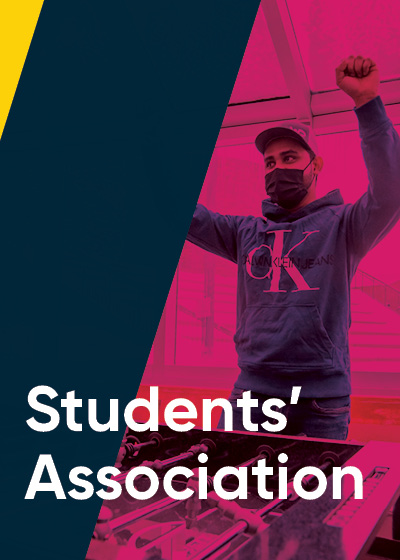Frequently Asked Questions
Below you’ll find answers to some common questions about collective bargaining in the public sector.
An organization of employees that has a written constitution, rules or bylaws, formed to regulate relations between employers and employees.
A trade union acting on behalf of employees in collective bargaining with an employer or employers’ organization.
The exclusive authority given to a trade union to negotiate through their chosen representatives, or the right of a union certified by the Labour Board to represent the members in collective bargaining.
A group of workers who are:
- part of the union
- considered by the Labour Board as an appropriate group to bargain together
- covered by the same collective agreement.
A written agreement between the union and employer that tells workers and the employer what their respective rights and responsibilities are. It is also called a “contract.” The collective agreement contains the terms or conditions of employment that are binding on all parties covered by the agreement. It covers such things as:
- wages
- benefits
- hours of work
- conditions of work
- seniority
- how to handle disagreements
The process through which employers and employees establish the terms and conditions of employment in unionized workplaces. At Northwestern Polytechnic, there are three groups representing employees:
- Academic Staff Association
- Alberta Union of Provincial Employees Fairview,
- Alberta Union of Provincial Employees Grande Prairie.
Bargaining in which both parties make every reasonable effort to reach a collective agreement.
Management rights refer to the right of employers to manage their business and operations as long as they comply with human rights and other labour laws. These rights are not restricted by a collective agreement but they apply to employees covered by the agreement. In general, management has the right to determine what work will be done, when it will be done and who will perform the work. The collective agreement imposes obligations on management and the union for rates of pay, benefits, breaks, leaves and other conditions. See "collective agreement.”
Served by either the union or employer to initiate collective bargaining.
A vote conducted by the Labour Relations Board to determine whether a party wishes to accept:
- a collective bargaining offer
- a mediator's recommendation or
- recommendation of a Disputes Inquiry Board.
Another way of describing a proposal vote.
A vote by bargaining unit members to accept or reject a proposed collective agreement (or other agreement). The vote is supervised by the Labour Relations Board, and the outcome determines whether an agreement is accepted or rejected.
Legislation in Alberta that sets out requirements for certification, bargaining and managing and resolving grievances between unions and employers.
There are two types of mediation outlined in the Labour Relations Code — informal and formal. The appointment of a mediator is considered a regular part of the collective bargaining process.
- At any time during collective bargaining, either or both parties may ask for the assistance of a mediator. Possible outcomes of mediation:
- The mediator helps the parties reach a ratified collective agreement
- The mediator makes a recommendation for settlement that is accepted by the parties and forms the basis of a collective agreement.
- Both or one party may reject the mediator’s recommendations. (The parties can continue negotiations, with our without the mediator.)
- The mediator is not able to resolve differences between the parties. (The parties can continue negotiations, with or without the mediator.)
Informal mediation
- Informal mediation can be requested anytime by one of the parties. This is a voluntary step in the bargaining process. If the informal mediation fails, the parties then are considered at impasse and need to negotiate an Essential Services Agreement as a necessary step before formal mediation can begin.
Formal mediation
- Formal mediation: If one or both parties declare an impasse, one or both parties can apply to the Alberta Labour Board for formal mediation. If only one party requests formal mediation, the Labour Board can deny the request if it’s believed there is an opportunity to reach a negotiated settlement. Formal mediation may lead to a tentative agreement that is then take to a ratification vote and employer board acceptance. However, if formal mediation fails and the Essential Services Agreement is in place, a 14-day cooling off period begins before a strike vote or lockout decision may take place.
A person appointed by the Director of Mediation Services or, in some cases, agreed upon by the employer and the union, to mediate. The mediator acts as a neutral third party and has no power to force a settlement, but works with both parties to help arrive at a mutually acceptable agreement.
A period of 14 days from:
- The date on which a mediator notifies the parties that the mediator does not intend to recommend terms of a settlement
- The date fixed by the mediator for acceptance or rejection of the recommendations of the mediator
When an employer and a union representing the employees cannot agree upon the terms and conditions of a collective agreement.
The point in collective bargaining negotiations at which either party determines no further progress can be made toward reaching an agreement. Once an impasse has been declared, the parties must follow the steps outlined in the Alberta Labour Relations Code (LRC) to resolve it.
When the employer closes a place of employment, suspends work, refuses to continue to employ employees or aids another employer in compelling employees to accept terms or conditions of employment. A lockout is legal only after the collective agreement has expired and bargaining has gone through the steps required by law.
An announcement of an employer’s intention to lockout employees, given in writing by an employer to the trade union and the mediator. The employer must provide 72-hours’ notice of lockout.
An agreement negotiated between a union and the employer to determine which services, if any, are essential and must be continued during a job action (strike or lockout). The employees identified in the ESA are exempt from strike or lockout and the terms and conditions of their employment form part of the ESA. Consideration is given to services that, if interrupted, would endanger life, personal safety or health, and are necessary for maintaining rule of law and public security.
A refusal to work as part of a concerted action for the purpose of compelling an employer to agree to terms and conditions of employment.
A strike not sanctioned by the union and which violates the collective agreement and/or the Labour Relations Code requirements that provide for a legal strike. The term “wildcat strike” may be used to refer to an illegal strike.
A democratic process conducted among unionized employees to authorize their union leadership to call a strike, if necessary, during labour negotiations to settle a dispute. More than 50 per cent of those eligible to vote must vote in favour of the strike for employees to engage in a legal strike. A strike vote can also be used to gauge member support for potential strike action, provide leverage for the union bargaining team or aid in strike avoidance by encouraging the employer to negotiate differently.
Activity organized by a union outside of a workplace to draw attention to a labour dispute. This physical presence around, but not on, an employer’s premises has the purpose to discourage others from entering the property or dealing with the employer. Picketing usually occurs during a strike or lockout. Picketing is generally protected under laws related to freedom of speech and assembly. However, picketing must be conducted peacefully and within legal frameworks.
Non-striking employees reporting for work during a strike by unionized workers. There are no provisions in the Labour Relations Code that allow non-striking employees to refuse to cross a picket line.
A bargaining directive is issued under Section 3 of the Act and gives guidance that “an employer must follow before, during and after engaging in collective bargaining or a related process.”
A bargaining directive may address “the term of a collective agreement an employer may propose or agree to” and/or “fiscal limits the employer must operate within when engaging in collective bargaining or a related process”.















